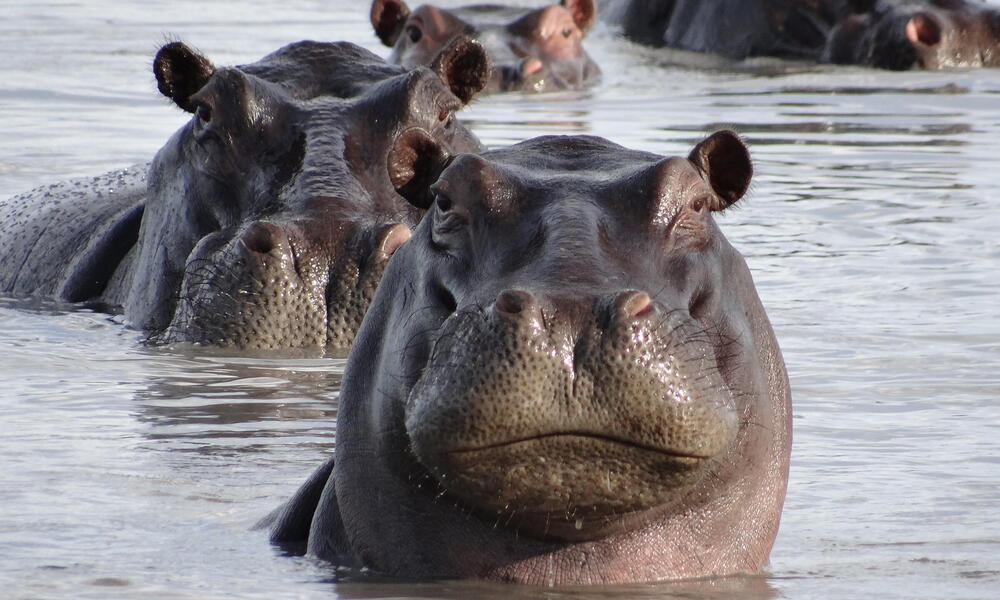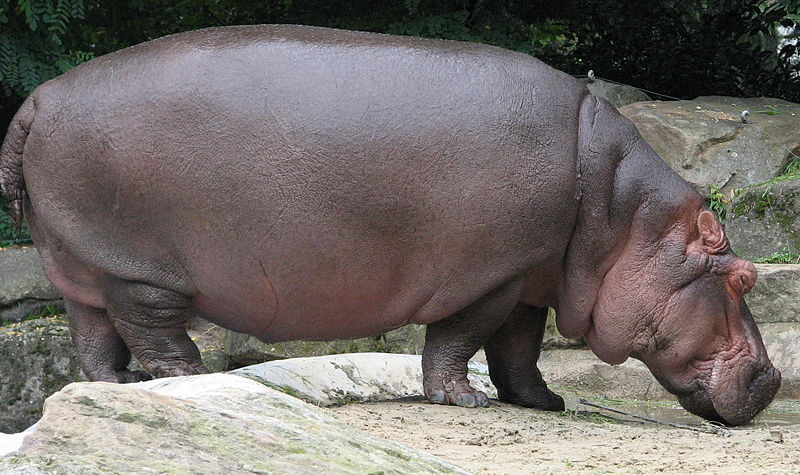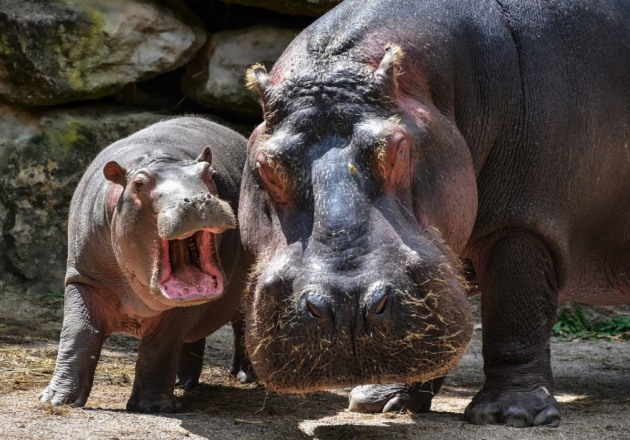The Magnificent Hippopotamus: A Deep Dive into Nature's Most Enigmatic Behemoth
In the vast and varied tapestry of the animal kingdom, few creatures capture the imagination quite like the hippopotamus. From its imposing size and formidable demeanor to its surprising agility and complex social behaviors, the hippo stands as a testament to the wonders of evolution and the mysteries of the natural world. In this exploration, we delve into the multifaceted world of the hippopotamus, uncovering its biology, ecology, cultural significance, and conservation challenges. The Hippopotamus: Anatomy and Physiology
The Hippopotamus: Anatomy and Physiology
The hippopotamus, whose name is derived from the ancient Greek words for "river horse," is a large, semi-aquatic mammal native to sub-Saharan Africa. Belonging to the family Hippopotamidae, the hippo is closely related to whales, dolphins, and other ungulates. Despite its seemingly cumbersome appearance, the hippo is remarkably well-adapted to its aquatic habitat, possessing a range of anatomical and physiological features that enable it to thrive in both water and land environments.
One of the most distinctive features of the hippopotamus is its massive size, with adult males, known as bulls, typically weighing between 1,500 and 3,200 kilograms (3,300 to 7,100 pounds), and females, or cows, slightly smaller. Despite their bulk, hippos are surprisingly agile in water, capable of submerging themselves for extended periods while grazing on aquatic vegetation. Their barrel-shaped bodies, short legs, and webbed feet contribute to their prowess as aquatic athletes, allowing them to navigate rivers, lakes, and swamps with ease. Above the waterline, hippos possess a range of adaptations suited to their semi-aquatic lifestyle. Their eyes, ears, and nostrils are positioned high on their heads, enabling them to remain submerged while keeping watch for potential predators and rivals. Additionally, their thick, hairless skin secretes a viscous red fluid that acts as a natural sunscreen and antibiotic, protecting them from sunburn and infections.
Above the waterline, hippos possess a range of adaptations suited to their semi-aquatic lifestyle. Their eyes, ears, and nostrils are positioned high on their heads, enabling them to remain submerged while keeping watch for potential predators and rivals. Additionally, their thick, hairless skin secretes a viscous red fluid that acts as a natural sunscreen and antibiotic, protecting them from sunburn and infections.
Internally, hippos boast a complex digestive system adapted to their herbivorous diet. Their large, multi-chambered stomachs ferment plant material, extracting nutrients and energy from tough, fibrous vegetation. Despite their predominantly herbivorous diet, hippos are considered opportunistic feeders, occasionally supplementing their diet with small animals or carrion when available.
Ecology and Behavior Hippos are primarily found in sub-Saharan Africa, where they inhabit rivers, lakes, marshes, and swamps. They are most commonly associated with freshwater habitats, although they can occasionally be found in brackish or saline environments. These semi-aquatic habitats provide hippos with access to both aquatic vegetation and terrestrial forage, allowing them to meet their dietary needs year-round.
Hippos are primarily found in sub-Saharan Africa, where they inhabit rivers, lakes, marshes, and swamps. They are most commonly associated with freshwater habitats, although they can occasionally be found in brackish or saline environments. These semi-aquatic habitats provide hippos with access to both aquatic vegetation and terrestrial forage, allowing them to meet their dietary needs year-round.
In the wild, hippos are social animals, typically forming groups known as pods or bloats. These social structures are dynamic and hierarchical, with dominant individuals asserting control over access to resources and mating opportunities. Within a pod, communication occurs through a range of vocalizations, postures, and behaviors, which serve to maintain social cohesion and resolve conflicts.
Despite their generally peaceful demeanor, hippos are fiercely territorial and will defend their territories from intruders, including other hippos and potential predators. They are known for their aggressive displays, which may include vocalizations, gaping displays of their formidable jaws, and, in extreme cases, physical confrontations. However, most conflicts are resolved through ritualized displays of dominance, minimizing the risk of injury or death.
Reproduction in hippos typically occurs year-round, although peak breeding seasons may vary depending on local environmental conditions. Females give birth to a single calf after a gestation period of approximately eight months. Newborn calves are vulnerable to predation and must remain close to their mothers for protection and nourishment. However, within a few weeks, they become more independent and may join other calves in nursery groups while their mothers forage. Cultural Significance and Conservation Challenges
Cultural Significance and Conservation Challenges
Throughout history, hippos have held a prominent place in human culture and mythology. In ancient Egyptian religion, the hippopotamus was associated with fertility, protection, and the afterlife, often depicted in religious art and symbolism. In African folklore, hippos are revered as symbols of strength, resilience, and wisdom, with tales of their exploits passed down through generations.
In contemporary culture, hippos continue to captivate the imagination through literature, film, and popular media. From children's books featuring lovable hippo characters to wildlife documentaries showcasing their majestic presence in the wild, hippos hold a special fascination for people of all ages. However, alongside their cultural significance, hippos face a range of conservation challenges that threaten their long-term survival.
Habitat loss and degradation represent one of the most significant threats to hippo populations across Africa. As human populations expand and natural habitats are converted for agriculture, infrastructure development, and urbanization, hippos are increasingly confined to fragmented and degraded habitats. Loss of access to freshwater resources and disruption of migratory routes further exacerbate their vulnerability to extinction.
Moreover, hippos are increasingly coming into conflict with humans as competition for resources escalates. Encounters between hippos and people, particularly in areas where agriculture and livestock grazing overlap with hippo habitat, can result in crop damage, livestock predation, and even human fatalities. In response, local communities may retaliate by poaching or culling hippos, further exacerbating population declines.
Additionally, hippos are susceptible to a range of threats, including poaching for their meat, ivory-like teeth, and skin; habitat pollution from agricultural runoff and industrial waste; and diseases such as anthrax and foot-and-mouth disease. Climate change poses further challenges, altering precipitation patterns, increasing the frequency of extreme weather events, and exacerbating habitat degradation. In light of these threats, conservation efforts are underway to protect and preserve hippo populations across Africa. These efforts include habitat restoration initiatives, community-based conservation programs, anti-poaching patrols, and public education campaigns aimed at raising awareness about the importance of hippos and their habitats. Furthermore, international cooperation and collaboration are essential to address the transboundary nature of hippo conservation and ensure the long-term viability of hippo populations.
In light of these threats, conservation efforts are underway to protect and preserve hippo populations across Africa. These efforts include habitat restoration initiatives, community-based conservation programs, anti-poaching patrols, and public education campaigns aimed at raising awareness about the importance of hippos and their habitats. Furthermore, international cooperation and collaboration are essential to address the transboundary nature of hippo conservation and ensure the long-term viability of hippo populations.
In conclusion, the hippopotamus is a truly remarkable creature, endowed with an array of adaptations that enable it to thrive in its aquatic habitat. From its imposing size and fearsome reputation to its complex social behaviors and cultural significance, the hippo occupies a unique place in the natural world. However, as human pressures continue to mount, hippos face an uncertain future, underscoring the urgent need for concerted conservation action to safeguard their survival for generations to come.






















































